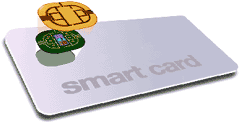A smart card is a plastic technology card with a built-in chip used for electronic processes such as personal identification, access control, authentication, and financial transactions. They are used or "read" by smart card readers or terminals to obtain card information and perform transactions.
Smart card readers are available in either contact, contactless, or a combination of contact and contactless models. Contact readers require that the card is manually inserted into the reader by the user. This application is most commonly used for ID and stored value cards. The primary advantage of this type of card is that it offers more security.
Contactless smart card readers operate with a radio frequency that communicates when the card comes close to the reader. The card does not physically have to be put onto or into the actual reader.
Considerations for Your New Smart Card Reader
- Frequency range for compatibility – Readers are designed to look for frequencies and will relay information back and forth from where card can be read from.
- Landscape or area to fit the reader appropriately – Once you decide on an indoor or outdoor reader, make sure the wiring is set up correctly and that the reader will fit accordingly in the designated area.
- Checking access control system for compatibility – Before investing in your smart card reader, it's important to ensure that the reader you select – along with your access control system – can work together.
When it comes to smart cards and smart card readers, there can be a lot of moving parts to consider. If you have questions, you can rely on an ID Professional to help you make an informed choice. Call today at (800) 321-4405; you'll be glad you did!

